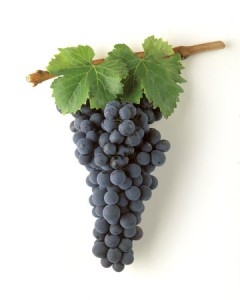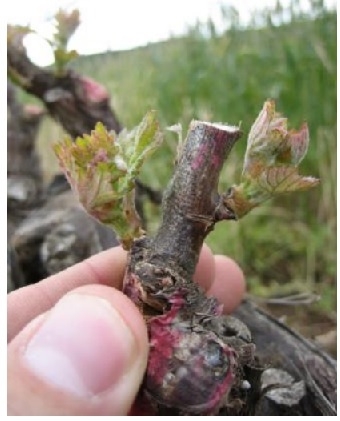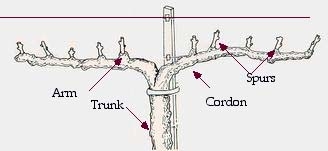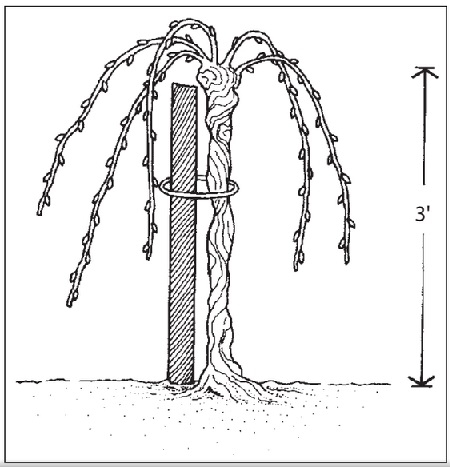
of the Master Gardeners of Contra Costa County
Client's Request: (via earlier phone call) I have Zinfandel grapes in my backyard garden. Looking at them now it appears that they aren't providing me with a good harvest. I'm concerned about pruning them this winter to get the best harvest. Would you please provide me with the appropriate information about pruning Zinfandel grape vines.
MGCC's Help Desk Response: Thank you for contacting Master Gardeners with your Zinfandel grape pruning question. I understand that when you phoned our offices, the Master Gardener with whom you spoke mentioned that we occasionally have presentations on growing and caring for grapes. Right now, we have only one such presentation on the calendar. It will occur at “Our Garden” on Saturday, October 3, beginning at 10 a.m (click for more info). Our Garden is a demonstration garden that is maintained by our Master Gardener program. It is located at the corner of Wiget Lane and Shadelands Drive in Walnut Creek. This link will take you to a map where you can download driving directions: http://ccmg.ucanr.edu/?mapd=&calnum=267082
I believe that the presenter at Our Garden will demonstrate grape pruning on table grapes that grow in the garden. However, he is quite knowledgeable about grapes and will probably reserve some time to answer questions that attendees may have after seeing the demonstration.
Now for some general information about pruning Zinfandel grapes. As you may know, there are two primary systems of pruning for grapes. The system you use is based on the variety of grapes you are growing. Zinfadel grapes are typically spur pruned. (The other pruning system is called cane pruning.)
Pruning of grape vines typically occurs in the dormant season (any time after the leaves have fallen from the plants and before new growth begins the following spring… usually mid to late winter.)
In the first year the grapes are pruned, start by cutting each plant back to a single two bud spur. Page 11 of the PowerPoint presentation slides at this link shows a photograph of a two bud spur: http://afghanag.ucdavis.edu/a_horticulture/fruits-trees/grapes/presentations-powerpoint/PPT_Grape_Pruning_Systems.ppt. Keep in mind that the photo was taken after the buds had begun growing. When you do your pruning, the buds will not yet have begun growing.
When the plants start growing, you'll need to decide whether you are going to train them as bilateral cordons attached to a trellis or “head train” them which uses stakes to support the plants but does not require a trellis system.
This publication on growing Zinfadel from the University of California indicates that either cordon training or head training can be used for Zinfandel grapes: http://iv.ucdavis.edu/files/24366.pdf As you'll see in the article, the author indicates that many Zinfandel growers prefer to use head training. The reason is that Zinfandel tends to overcrop easily, and if the fruit is not thinned, it will ripen with difficulty or not at all. Because head training produces fewer fruiting spurs than cordon training, using head training will reduce the chance that you will accidentally allow too many grape clusters to remain on the plant.
with spur pruning
Here is a UC diagram that illustrates how a bilatereal cordon trained spur pruned grapevine will look:
The best illustration I located of what head pruned grapevines look like appears on page 16 of this Oregon State University publication: http://ir.library.oregonstate.edu/xmlui/bitstream/handle/1957/21285/ec1639.pdf The OSU publication focuses on table grapes, but the pruning principles would apply equally well for wine grapes.
Finally, keep in mind that once your vines are mature and fully trained, you'll need to do annual pruning to prompt development of new grapes and to keep them producing well. The OSU publication as well as the UC article on head-pruning also contain good information about pruning of mature, fully trained vines.
I hope that this information is helpful and that you have an opportunity to attend the presentation at Our Garden on October 3. You are welcome to contact us again if you have additional questions.
Help Desk of the Master Gardeners of Contra Costa County
Note: The Master Gardeners of Contra Costa's Help Desk is available year-round to answer your gardening questions. Except for a few holidays, we're open every week, Monday through Thursday for walk-ins from 9:00 am to Noon at 75 Santa Barbara Road, 2d Floor, Pleasant Hill, CA 94523. We can also be reached via telephone: (925) 646-6586, email: ccmg@ucanr.edu, or on the web at http://ccmg.ucanr.edu/Ask_Us/